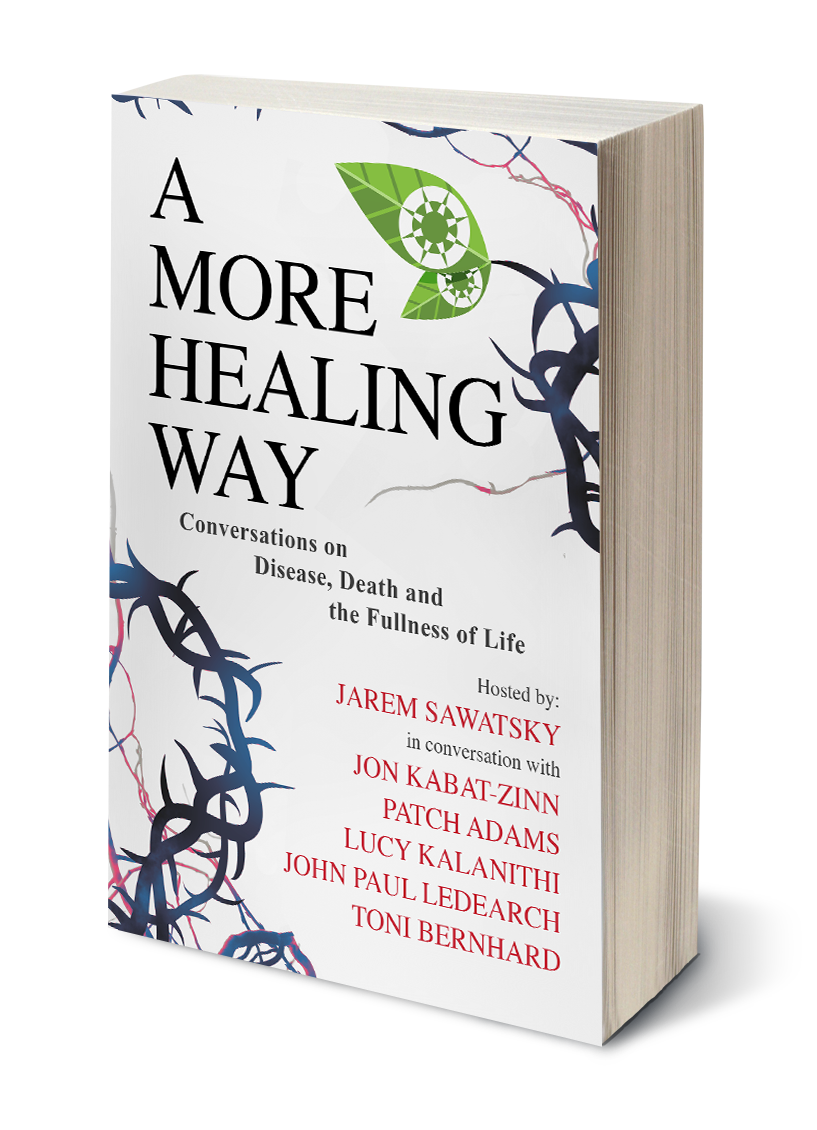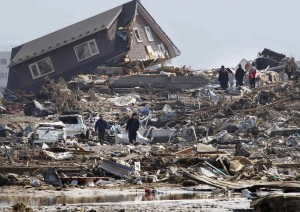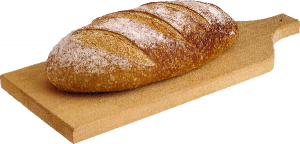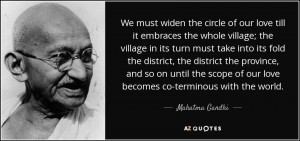
Where should I send the audio and video series?

Where should I send the audio and video series?

You know the size of an earthquake by the violent impact of its tremors. When my mom was the same age as I am now, the year was 1990. I was in grade 12. We were probably about 8 years into the earthquake of her Huntington’s Disease, the same disease I have inherited from her.
By then my parents’ relationship had been crushed, piece by piece, tear by tear. My older brother- protecting himself by doing what I often wished I could do – got the hell out. My mom had already alienated herself from almost everyone. Much of the time she stayed at home and would not answer the door. I was left alone, with her.
To make matters worse, I tried to be the compassionate, listening son, staying present through the trauma of the earthquake that knew no end. For my mom, those were the days of suicide threats and attempts. It was her I-hate-all-men phase and her 8-year-migraine headache phase and, towards me, it was her your-going-to-be –an awful-parent phase. She spent most days in her housecoat, on the couch, throwing up into an empty 4-liter ice cream pail, the kind she used to fill with homemade chocolate chip cookies and freeze. Her cooking and baking days were behind her now. She was in the fog of Huntington’s.
She was still in denial that she had the disease. And we had 16 years of more earthquake trauma (and other things too) to go until she died.
Mostly I try not to think about those days. But now I have this disease. Now my twin high school girls walk the same halls of our neighbourhood, the inner-city high school where I took refuge when I was their age. For some time now each time my wife, Rhona and I argue, there is a moment when she looks at me in fear and sees a disease.
I keep wondering what kind of habits and supports can make this walk a little more bearable, maybe even enjoyable, for my kids, Rhona and me. I am reliving my teen years, wondering what might have helped us in the midst of the earthquake. Can our family and friends live this in a way that does not pass down all the trauma of previous generations onto the heads of my girls?
I don’t think we are ever really alone, but as a teenager, I felt like the weight of my mom’s earthquake fell to me alone. In hindsight, I am still a bit jealous of my brother, who while still caught in the earthquake, was always better at saying “no” and creating some distance. My mom, my brother and I needed support. That circle was too small. Support was offered at the time, but my mom was not interested.
So this time around, I want to try to not make all of the same mistakes.
One of the ways we have tried to walk this journey in a more healing way is to create a Circle of Support and Accountability around us, as a reference point for the journey. We picked 6 people from our church with whom we both had a very positive relationship of respect. We chose people with the following traits:
One of the things I like best about my church-community is that through hard-won experience, the group has a tendency to respond to traumatic events by creating circles of care. At life-stage changes, like turning 12, becoming married, having children, the church gathers more naturally in various circles of care. But a similar approach is used for traumatic events: a breakdown of a marriage, the death of a friend, deep conflict between members.
It is not a rule or requirement or even an expectation. It is simply done because people have witnessed first-hand of goodness that comes from sharing in each journey, especially at those most painful places of disorientation. So when a dear friend (and circle junkie) from our church offered to do whatever we wanted if we wanted to help to make such a circle available for us. We agreed. We had already been talking and planning for such a circle.
We invited the carpenter, the artist, the baker, the psych nurse, the social worker, and the food justice advocate. I know, it sounds like a joke. But for us, these are simply our friends. Everyone said yes, even though each had many good reasons to say no. They are our companions. Companion literally means – to accompany with bread. And they do – usually bread and butter and sometimes wine. Right now we gather every other month alternating sharing circles and meals with kids. The carpenter facilitates. We share our journey.

I have come to believe that people from various cultures have been gathering in circles for a long time. In Canada, gathering in circles to respond to traumatic events is quite common in aboriginal communities. Many of these practices were unjustly outlawed, shunned and discouraged. But there is still a memory in some of the elders of ways that the community gather in circles to try help people to walk in a healing way, to try to help people understand about their identity and the connections to the world around them. I believe such practices were common around the world. Before states stole conflicts from communities, communities gathered together in circles to become strong again.
In my prior life as a peace researcher and teacher, I did a lot of work in the field of restorative justice. This is one of the settings where people around the world are re-learning how to use peacemaking circles to move from crime to community. Living Justice Press is a great book publisher whose single purpose is sharing such examples of circle peacemaking.
Circles of Support and Accountability is one organization that powerfully developed practices of developing circles around people were incarcerated for committing sexual offenses and held to the end of their sentence because of their high-risk to re-offend. The circle tries to offer support for reintegration into the community while at the same time creating accountability by challenging behaviour that might lead to more harm. This example has been a model for me to think about while trying to form my own circle.
I’ve often wondered if it would have helped to have such a circle in my family’s life when we were going through the trauma of Huntington’s disease. The teenager in me wishes there was a way for others to have offered loving support and kind of accountability that is needed when someone is losing their mind and still in denial. So now as the generations turn, we’ve created our own Circle of Support and Accountability. Hopefully, it relieves some of the pressure off Rhona, my kids and myself so that there is more space to enjoy the journey.
It seems to me that circles teach us a lot about living life with wisdom. So far here around some of the gems I’ve learned:

When our support circle started to gather, we asked ourselves what we would do. Our supporters were very aware that they did not know a lot about Huntington’s Disease.
In passing, we had said that the national conference on Huntington’s Disease was coming to our city and that Rhona and I would go and see what we could learn. Without our knowing, members of the support group went to the church and asked for money for the whole circle, including us, to go to the conference to learn about HD. The church approved. Everyone from our circle signed up. When we all showed up for one of the main sessions, we filled a whole table! I should say we almost filled a table. One chair was left empty. Soon someone we didn’t know came and sat with us. We did introductions. When our new friend learned that the whole table was from our church, and there for me and Rhona, she was shocked. She is a social worker who works for Huntington Society of Canada. She commented a number of times on our odd arrangement. She said most individuals don’t even get this much support from their family, never mind the wider community. That stuck with me.
Healing resources are out there. We often fail to find ways to access them or to call them out of each other. Creating a circle of support and accountability is one way to work at this. It has benefited our lives. I am curious how others have created/invited/copied ways of accessing and engaging the communities around them to become circles of support and care. Please leave a comment about your attempts to work at receiving and giving care from communities.
Reminds me of the Quakers – Circles of Trust, Parker Palmer talks about in his book – A Hidden Wholeness. http://www.beliefnet.com/Inspiration/2004/10/Sitting-In-Circles.aspx I’ve experienced them primarily for discerning direction in life – as I will in this my last year of contract at GBC. Wonderful moments of silence and reflection that rests / has it’s source in the healing light / wisdom of Spirit.
Powerful stuff, Jarem. I think you’re showing the way forward for all of us with past earthquakes that we’d rather not pass on to our children. You’ve experienced our little circle here in Summerland and understand how we value it. I’d like to hear more about how your circle works — do you make any attempt to structure the conversation, or is it always free-form?
Hi Jeremy, Your circle is deeply profound. I would be interested to hear your thoughts on why it works so well. You have great people, strong intention but not a strong obvious structure. What makes this work? I have been in many circles with very good people which have not worked very well as circles of care. Taking turns speaking and treating the circle like a meeting seem to be some of the problems. In terms of our circle, we do check in with everyone. In some ways we are trying to run an ultra-marathon with this group. If my disease kills me, that could take another 20 years of slowly dying (and living). Its not a short dash of help but very long slow march with our people. I think people are better with the short stuff. Your family member dies and people kind of know what to do, how to show support. But if you are dying for 20-25 years – who knows how to engage this? So in my own thinking I my inner hopes from the group is the we go slow. In this 20 year ultramarathon then, their may be other members of the circle that die before me. This is to say their life goes on and it is our hope that the circle can be a kind of place where the other circle members can also work at making meaning of the life they are living (and dying). Rhona and I do take up more of the time of the group. We try to be transparent in sharing our experience – even when we have different experiences. I can’t quite put my finger on what makes it work. I don’t think it is the structures. It is the quality of the relationship with great people. I know that they, much like you, can sniff bullshit a mile away. Right now, I also know that they want to be a compassionate loving and truthful presence in our lives. I am grateful for that.
I just shared this wonderful posting with people in a Restorative Justice group we have on Salt Spring Island here. We will be meeting later today so the timing was great. It feels to me like the vision you have shared is so appropriate for these times. And you shared it in such a way that it is much more than just words – the emotional impact gives this posting power so many lack. Thank you so much.
Thank you Jan. Your gulf islands hold a special place in my heart. We lived on Saturna Island for 6 months. It was the right time to be surrounded by such immense beauty as this was also the time I figure out the my disease was disrupting my ability to do my research and writing. Thanks for sharing.
Jarem